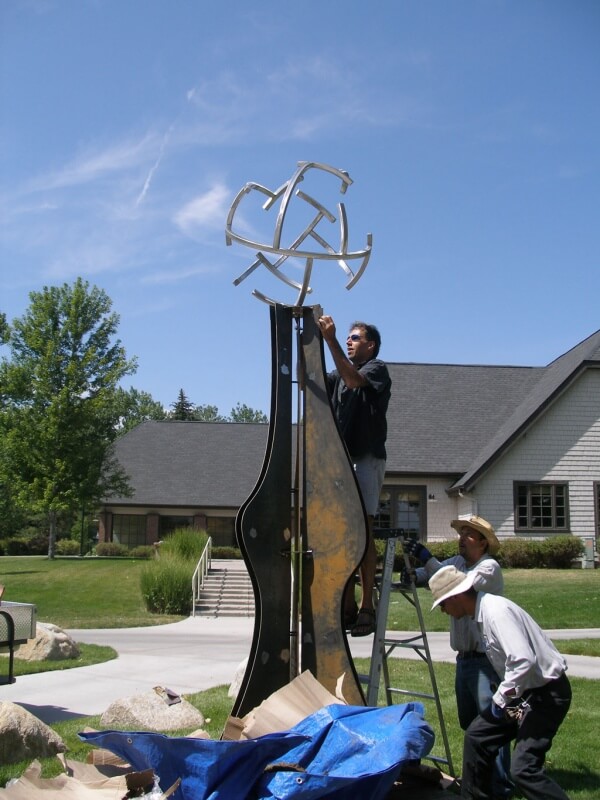For more than a year, award-winning artist and CA alumnus Navid Ghedami has toiled in his Houston studio with Colorado Academy on his mind. Ghedami attended CA for just one year, graduated with the Class of 1980, and went on to college, gaining a background in engineering, design, and business. But, he says, “That one year at CA was one of the best parts of my life.”
Last year, when Ghedami learned that CA was constructing a new Upper School, he jumped at the chance to “give something back.” Having won awards for his public art installations, Ghedami offered to create a custom sculpture, providing an inspiring marker at the front of the new Upper School where students could congregate. He traveled to Colorado to visit the site and returned to his studio to begin his work. Throughout the process, he sent photos to CA and provided progress reports on his work.
At the outset, Ghedami said he envisioned elements of different metals that would represent both the foundation and opportunities provided by a CA education. In fact, he titled the work “Envision,” to inspire students to “Envision what you can achieve with an active imagination and friendly cooperation.” Ghedami built the top section of the sculpture in Texas, and completed the base in Colorado in August. CA students recently assisted in the installation of the piece, and it will be dedicated at the end of September on the occasion of CA’s 2013 Homecoming.
Originally from Tehran, Iran, Ghedami and his family immigrated to the U.S. in the late 1970s. He says what he remembers most was how CA embraced him from his first day on campus. Today, Ghedami maintains studios both in Houston, Texas and Santa Fe, New Mexico.
Ghedami’s art is at the southern edge of CA’s Sculpture Garden, which already is home to three works by another former student and nationally recognized sculptor, Gary Dwyer ’62. Dwyer’s pieces are titled “Search,” “Connection,” and “Solidification.” The three works were dedicated in 1974, and they illustrated what Dwyer considered to be the three components of the educational process.
